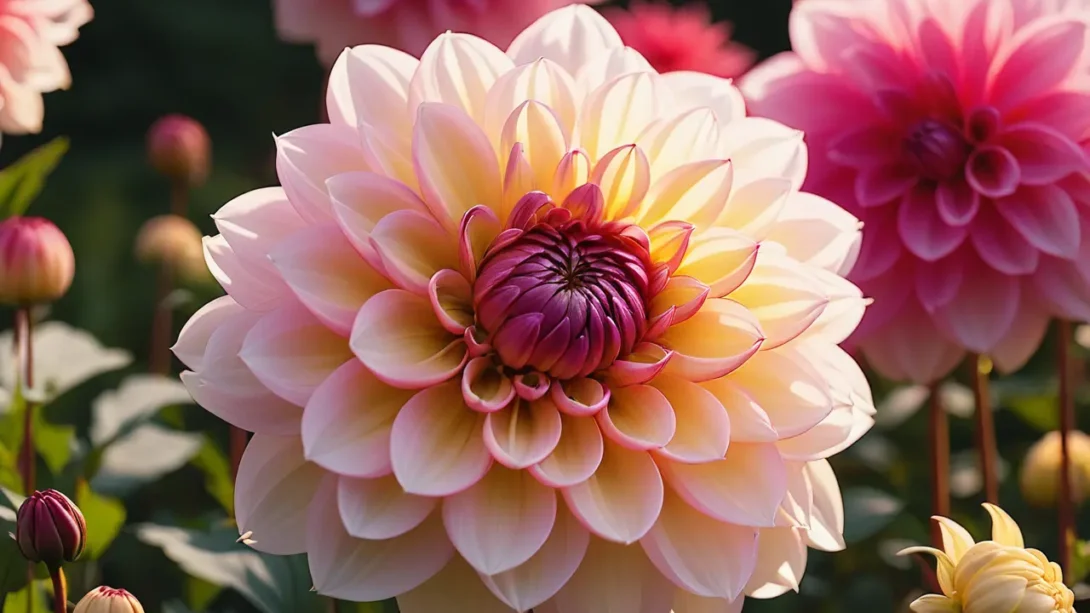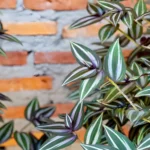Dahlias (Dahlia spp.) are among the most vibrant and diverse flowers found in gardens worldwide. Their wide range of colors, sizes, and shapes make them a favorite among gardeners and floral enthusiasts. However, for pet owners, especially those with dogs, the beauty of these plants often comes with a concern: are dahlias safe for dogs? This question is crucial for those striving to maintain a pet-friendly garden. In this article, we delve into the toxicity of dahlias to dogs, exploring what parts of the plant may pose risks, the symptoms of ingestion, and how to prevent accidental consumption by our canine friends.
Dahlia Toxicity
The question of whether dahlias are toxic to dogs is a common one among pet owners. According to the American Society for the Prevention of Cruelty to Animals (ASPCA) and other reputable sources, dahlias are considered to be “non-toxic” to dogs. However, this does not mean they are entirely safe. Like many plants, dahlias can cause mild gastrointestinal upset if ingested. The specific parts of the plant, such as the leaves, stems, and blooms, contain compounds that can be irritating to a dog’s digestive system. It’s important for dog owners to know these details to prevent any potential health issues for their pets.
Symptoms of Dahlia Ingestion in Dogs
When a dog ingests parts of a dahlia plant, the symptoms can vary depending on the amount consumed and the sensitivity of the dog. Common signs of dahlia ingestion include:
- Vomiting
- Diarrhea
- Salivation
- Lack of appetite
These symptoms are generally mild and tend to resolve on their own within a day or two. However, if a dog consumes a large amount of dahlias or if the symptoms persist, it’s crucial to seek veterinary care. In rare cases, more severe reactions can occur, necessitating professional medical attention.
First Aid and Treatment
If you suspect that your dog has ingested parts of a dahlia plant, the first step is to remain calm. Observe your dog for any immediate signs of distress or severe reaction. Mild symptoms such as slight vomiting or diarrhea are usually not cause for alarm and can be managed at home. However, providing access to plenty of fresh water is essential to keep your dog hydrated.
In cases of mild reactions, it’s advisable to monitor your dog closely for any changes in behavior or worsening symptoms. Should the dog exhibit more severe symptoms, such as continuous vomiting, diarrhea, or signs of pain and discomfort, contacting your veterinarian is crucial. The veterinarian may advise on specific treatments or suggest bringing the dog in for a check-up.
Veterinary intervention for dahlia ingestion typically involves supportive care to relieve the symptoms. This can include administering fluids to prevent dehydration and medications to alleviate gastrointestinal upset. Recovery from mild dahlia ingestion is generally swift, with dogs returning to their normal selves within a few days.
Preventing Dahlia Ingestion
Preventing your dog from ingesting dahlias or any other potentially harmful plants is key to avoiding the associated risks. Here are some effective strategies:
- Fence Off Garden Areas: Consider fencing off areas of your garden where dahlias and other potentially risky plants are grown. This physical barrier can deter dogs from accessing and chewing on these plants.
- Supervision: Always supervise your pets when they are in areas with a variety of plants. Direct supervision can prevent the ingestion of not just dahlias but other plants that might be harmful.
- Train Your Dog: Training your dog to obey commands such as “leave it” can be incredibly effective in preventing them from eating plants and other objects they shouldn’t.
- Safe Zones: Create designated areas in your garden where your dog can play safely. These areas should only include plants that are known to be non-toxic to dogs.
Alternatives to Dahlias in a Pet-Friendly Garden
Creating a dog-friendly garden doesn’t mean you have to compromise on color or variety. There are numerous non-toxic, vibrant alternatives to dahlias that can make your garden both beautiful and safe for your furry friends. Here are some pet-friendly plants to consider:
- Sunflowers (Helianthus annuus): These towering beauties add a splash of yellow or orange to your garden and are safe for dogs.
- Roses (Rosa spp.): While their thorns can pose a physical hazard, roses themselves are not toxic to dogs and can add elegance to your garden.
- Snapdragons (Antirrhinum majus): Known for their unique flowers, snapdragons are a safe and colorful choice for a pet-friendly garden.
- Petunias (Petunia spp.): With a wide range of colors, petunias are non-toxic and can provide ground cover or fill hanging baskets beautifully.
- Zinnias (Zinnia spp.): These easy-to-grow flowers are safe for dogs and come in many colors, making them a great alternative to dahlias.
Before adding any new plants to your garden, it’s important to research their toxicity. Even plants that are generally considered safe can have individual parts that might not be safe if ingested. Consulting with a veterinarian or a professional gardener can provide additional peace of mind.
Conclusion
While dahlias are not considered highly toxic to dogs, they can cause mild gastrointestinal upset if ingested. Being mindful of the plants you grow in your garden is crucial for pet owners to ensure a safe environment for their canine companions. By taking preventative measures and considering non-toxic alternatives, you can enjoy a vibrant, pet-friendly garden. Remember, creating a safe space for your pets doesn’t have to mean sacrificing beauty. With careful planning and consideration, you can cultivate a garden that is both stunning to look at and safe for all members of your family, furry ones included.



